

Learning Center Learning Center
Welcome to the Fibre Glast Learning Center!
At Fibre Glast, we believe that knowledge is the foundation of every successful project. Our Learning Center is designed to equip you with the expertise, tips, and techniques you need to work confidently with composites. Whether you're a seasoned professional or just beginning your journey in fiberglass and carbon fiber, our comprehensive resources are here to guide you through each step of your project.
Explore our collection of detailed guides, video tutorials, and expert advice on everything from resin infusion to mold-making, ensuring you achieve superior results every time.
Trust Fibre Glast for first-quality materials and the insights you need to elevate your craftsmanship.
White Papers and Articles
White Papers and Articles

Gel Coat Application Guide
Gel coat is the most common surface coating used in the fabrication and repair of fiberglass reinforced products. Gel Coat is a specially formulated two-part polyester resin that is designed to be the first layer of resin applied in a mold when making a polyester or vinyl ester composite part. It is intended to create an opaque surface which will completely block glass pattern show-through. Polyester resins in general, and specifically gel coats, are naturally UV resistant, and properly cured parts can be submerged in water. Most boats are made using gel coat with polyester resin and fiberglass.
Gel Coat Application Guide
Gel coat is the most common surface coating used in the fabrication and repair of fiberglass reinforced products. Gel Coat is a specially formulated two-part polyester resin that is designed...

Carbon Fiber vs. Kevlar: Material Strength and Impact Resistance
Many engineers, designers, and buyers are often uncertain about the differences between carbon fiber and Kevlar in practical applications. This guide explains the science, strengths, and trade-offs of carbon fiber versus Kevlar, helping you make the best choice for your needs. Carbon Fiber vs Kevlar Materials? Before diving into performance, it’s important to understand what these materials are and how they’re made. What is Carbon Fiber? Carbon fiber is a lightweight, high-strength material made from thin strands of crystalline carbon atoms. It’s known for its exceptional stiffness, low weight, and high tensile strength. Typically used in aerospace, motorsports, and robotics, carbon fiber is ideal for applications where rigidity and weight savings are critical. From F1 car panels to drone frames, its structural efficiency is unmatched. Carbon Fiber Strength and Impact Resistance Carbon fiber offers superior tensile strength (3.5–6.0 GPa) and stiffness (Young’s Modulus up to 800 GPa), but is brittle under impact. It tends to crack or shatter when subjected to sudden force, making it less suitable for high-impact environments. What is Kevlar? Kevlar is a para-aramid synthetic fiber known for its toughness, flexibility, and abrasion resistance. It’s a staple in protective gear and industrial applications. Kevlar’s strength lies in its energy absorption and fracture resistance. It stretches under stress, dispersing energy rather than breaking, making it better for impact-prone applications. Kevlar Strength and Impact Resistance Kevlar has slightly lower tensile strength (3.0–3.6 GPa) than carbon fiber, but its impact resistance is significantly higher. It elongates up to 4% before breaking, allowing it to absorb and dissipate energy effectively. Kevlar vs Carbon Fiber: Material Properties and Performance Comparison Tensile Strength Carbon fiber typically offers higher tensile strength, ranging from 3.5 to 6.0 GPa. Kevlar is slightly lower, at 3.0 to 3.6 GPa, but still strong enough for most protective and industrial uses. Stiffness (Young’s Modulus) Carbon fiber is stiffer, with a modulus between 200 and 800 GPa. Kevlar is more flexible, ranging from 60 to 120 GPa. Elongation to Break Kevlar can stretch 2.5% to 4.0% before breaking. Carbon fiber only stretches about 1.5%, making it more prone to cracking under stress. Impact Resistance Kevlar effectively absorbs and disperses energy, making it ideal for high-impact applications. Carbon fiber is more prone to shattering. Density Kevlar is slightly lighter (1.44 g/cm³) than carbon fiber (1.6 g/cm³), which can be important in weight-sensitive designs. Thermal Resistance Kevlar begins to degrade above 500°C (932°F). Carbon fiber undergoes sublimation, transitioning directly from a solid to a gaseous state at high temperatures. The temperature at which this process begins is around 3,652 - 3,697°C (6,600 - 6,687°F). Abrasion Resistance Kevlar offers excellent abrasion resistance. Carbon fiber is moderate in this area. Cost Carbon fiber costs around $10–$20 per pound. Kevlar ranges from $15–$25 per pound. Carbon Fiber vs Kevlar Property Comparison Property Carbon Fiber Kevlar Tensile Strength 3.5 – 6.0 GPa 3.0 – 3.6 GPa Young’s Modulus 200 – 800 GPa 60 – 120 GPa Elongation to Break ~1.5% ~2.5 – 4.0% Impact Resistance Low Very High Density ~1.6 g/cm³ ~1.44 g/cm³ Thermal Resistance Sublimates >3652°C (6600°F) Degrades > 500°C (932°F) Abrasion Resistance Moderate Excellent Cost per lb (avg) $10–$20 $15–$25 How These Materials Behave Under Impact Carbon fiber is incredibly stiff and strong, but doesn’t handle impact well, as it tends to fracture or de-laminate when struck. On the other hand, Kevlar stretches and absorbs energy, making it far more reliable in high-impact scenarios like industrial safety gear or blast shields. Cost, Fabrication, and Practical Tradeoffs Carbon fiber is brittle and challenging to machine, while Kevlar is tough but difficult to cut or drill. Kevlar also degrades faster under UV and needs protective coatings. Carbon fiber is more stable in harsh environments but can be more expensive to repair. Kevlar may require more maintenance in exposed conditions, but its durability makes it a better long-term choice for rugged use. Common Applications: Where Each Material Excels Carbon Fiber in Automotive and Aerospace Used in F1 cars, supercars, and UAVs for its stiffness and low weight. Kevlar in Industrial and Safety Equipment It is used for safety helmets, reinforced pressure vessels and pipes due to its abrasion and impact resistance. Carbon Fiber in Drones and Robotics Provides rigidity and precision for lightweight, high-performance frames and components. Kevlar in Sports & Recreation Applications Used in kayaks and canoes and hockey sticks and tennis rackets where fatigue resistance and abrasion resistance are needed most. Use Cases and Preferred Material Industry/Application Material Rationale F1 Cars / Supercars Carbon High stiffness, low weight Canoes and Kayaks Kevlar Abrasion and impact resistant Drones / UAV Frames Carbon Stiff, lightweight, performance-driven Tactical Helmets Kevlar Flexible and impact-absorbing Robotics End Effectors Carbon Precise and weight-optimized Recommended Products for Your Project For Carbon Fiber Applications: Carbon Fiber Fabrics: Plain and Twill Weaves: Ideal for structural parts, panels, and lightweight builds. High Modulus Carbon Fiber Fabrics: Best for aerospace and precision applications. For Kevlar Applications: Kevlar® 49 Fabric: Excellent for abrasion resistance and reinforcement in high-wear environments. For Hybrid Needs: Carbon/Kevlar® Hybrid Twill Fabric: Combines stiffness and toughness in one fabric. Kevlar®/Carbon Hybrid Yellow Kit: Great for small builds or prototyping with visual appeal. Pros and Cons of Carbon Fiber vs Kevlar Recap Carbon Fiber: Lightweight and Rigid Pros: High tensile strength, ultra-light, extremely stiffCons: Brittle, expensive, poor in impact, and shear Kevlar: Tough and Impact-Resistant Pros: High energy absorption, durable, cut/abrasion resistantCons: Lower stiffness, UV degradation, harder to machine Hybrid Composites: Combining Strength and Toughness Hybrid composites combine carbon fiber’s stiffness with Kevlar’s toughness. Carbon is often used on the outside for rigidity, while Kevlar is layered inside to absorb impact. These hybrids are common in racing panels, aerospace skins, and high-performance equipment. Which Should You Choose? Carbon Fiber or Kevlar? Kevlar is a great choice if your projects require strong protection and energy absorption. Carbon Fiber is best for lightweight and structural needs. If you want the benefits of both, try a hybrid composite. When selecting between the two options, determine your performance requirements and choose the best material. Carbon Fiber vs Kevlar FAQ Is Carbon Fiber Stronger Than Kevlar? Yes, in tensile strength. But Kevlar is better at absorbing impact and resisting fracture. Why Isn’t Carbon Fiber Used in Protective Gear? It’s brittle and doesn’t absorb energy well, which is a must for protective applications. What Material Is More Durable Than Carbon Fiber? Kevlar, Dyneema, and hybrid aramids offer better toughness and abrasion resistance. What Fiber Is Stronger Than Kevlar? Dyneema, Zylon, and carbon nanotube fibers exceed Kevlar’s strength but have tradeoffs. What’s 10x Stronger Than Kevlar? Graphene and CNT-based materials may be, but they’re not yet practical at scale.Does Kevlar or Carbon Fiber Resist Compression Better? Carbon fiber performs better under compression. Kevlar excels in tension and impact. Are Hybrid Kevlar/Carbon Composites the Best of Both Worlds? Yes, especially in aerospace, motorsports, and high-performance equipment.
Carbon Fiber vs. Kevlar: Material Strength and Impact Resistance
Many engineers, designers, and buyers are often uncertain about the differences between carbon fiber and Kevlar in practical applications. This guide explains the science, strengths, and trade-offs of carbon fiber...

Using the Materials Calculator
Materials Calculator for Carbon Fiber, Fiberglass, Resin and more. Whether you're working with fiberglass, carbon fiber, or Kevlar, this calculator helps you determine how much material and resin you'll need based on the size and number of your parts. No more guesswork — just quick, accurate estimates that help you buy exactly what you need. It’s perfect for both beginners and seasoned professionals looking to save time and money on material planning. The Materials Calculator can be found here. INPUTS Step 1 - Enter Dimensions and Desired Thickness Start by inputting the basic measurements for your composite project: Length and Width – Enter the size of the part or mold you plan to fabricate. Desired Thickness – This determines how many layers of reinforcement you'll need. Tip: If you're not sure how thick your part should be, see below for help choosing layers and materials. Step 2 - Select Materials for Your Project Next, choose the reinforcement material you'd like to use from the drop-down menu, such as: Chopped Strand Mat Woven Fiberglass Carbon Fiber Kevlar® Not sure what to use?Consult our white paper: What Do I Need for My Composite Project? Adjusting Layers for Thickness If you know your desired thickness (e.g., 0.25"), you can increase the number of fabric layers to reach it. For example: Using 6 layers of Chopped Strand Mat will help achieve a thickness slightly over 0.25” which is ideal for mold building. Alternatively, if you already know the number of layers you want to use, the calculator will reverse-calculate the final part thickness. Note: Be sure to account for core material and coating thickness: Gel Coat / Surface Coat: Add ~0.020"–0.025" Core material: and 0.125”-2” depending on thickness you choose Paint / Clear Coat: Typically, negligible in thickness: 0.001-0.003” RESULTS On the right side of the calculator, you’ll find a summary showing: Estimated Final Thickness (excluding core and coatings) Total Fabric Required Fibre Glast sells fabrics in: Pre-packaged sizes: 1, 3, and 5 yards Cut-to-length: Starting at 10 yards Round up your order to ensure you have enough material, especially for odd shapes or layered builds. Estimate Resin RequirementsThe calculator also estimates how much resin you’ll need, based on: Formula: Resin weight = Fabric weight × 1.75This result is shown in pounds, matching how resins are sold at Fibre Glast. Be sure to check the product description for weight per unit: Example: A gallon of 78-A Polyester Resin weighs ~9 lbs. In Practice:If your project requires 6.429 lbs. of resin: 1 gallon (9 lbs.) covers it with margin If you’re skilled at hand lay-up and want less waste, 3 quarts (~6 lbs.) may suffice Print the results for future reference. Final Thoughts The Fibre Glast Materials Calculator is designed to make your project planning smarter and more efficient. With just a few inputs, you’ll know: How much fabric to order. What your final part thickness will be. How much resin is needed down to the pound. Head over to the calculator and plan your next lay-up with confidence: Try it now!
Using the Materials Calculator
Materials Calculator for Carbon Fiber, Fiberglass, Resin and more. Whether you're working with fiberglass, carbon fiber, or Kevlar, this calculator helps you determine how much material and resin you'll need...

ChromaGlast™ Troubleshooting Guide
The attached document is a reprint of the PPG book A Guide to Identifying and Solving Common Paint Problems. The book was originally printed in 1993, and was out of print prior to the 2017 launch of ChromaGlastTM Premium Paint for Fiberglass and Composites. This book with photos does an excellent job of describing and troubleshooting typical problems with paint applications.
ChromaGlast™ Troubleshooting Guide
The attached document is a reprint of the PPG book A Guide to Identifying and Solving Common Paint Problems. The book was originally printed in 1993, and was out of...

ChromaGlast™ Paint vs. Gel Coat
The purpose of this article is to compare and explain the types of applications where gel coat or ChromaGlastTM Paint would be used. If you are interested in troubleshooting your gel coat or ChromaGlastTM application, please see either our Gel Coat Troubleshooting article or ChromaGlastTM Troubleshooting article.
ChromaGlast™ Paint vs. Gel Coat
The purpose of this article is to compare and explain the types of applications where gel coat or ChromaGlastTM Paint would be used. If you are interested in troubleshooting your...

Casting and Molding: Urethanes vs. Composites
Casting urethanes are versatile materials that can be used alone, with one another, or even with composites. From flexible molds to durable, impact-resistant parts, our selection of urethanes provides a wide range of properties for a variety of uses.
Casting and Molding: Urethanes vs. Composites
Casting urethanes are versatile materials that can be used alone, with one another, or even with composites. From flexible molds to durable, impact-resistant parts, our selection of urethanes provides a...
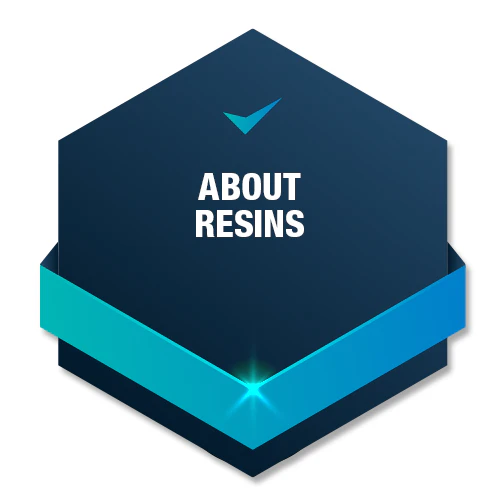
About Resins
Composites are a combination of fiber reinforcements and resin. The physical properties of composites are fiber dominate, meaning that the performance of finished parts is most directly related to that of the reinforcement. So what role does a resin play? This article will answer that and provide a basic understanding of the resin options available at Fibre Glast.
About Resins
Composites are a combination of fiber reinforcements and resin. The physical properties of composites are fiber dominate, meaning that the performance of finished parts is most directly related to that...
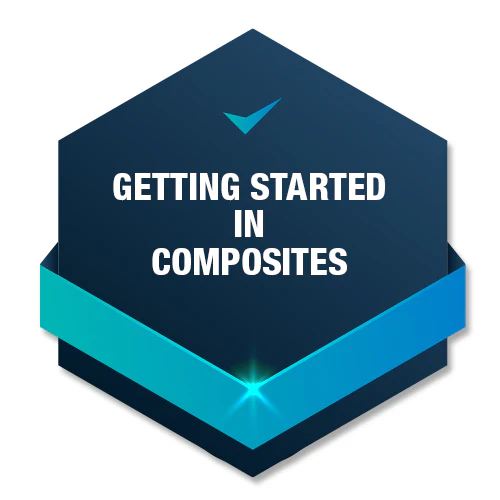
Getting Started in Composites
The exciting thing about composites is that an ordinary person can make things that they have never been able to make before, such as bathtubs, a boat, or a motorcycle! Race car bodies, canoes, airplanes, model aircraft, jet skis, boats, sculptures as well as traditional industrial molding and model making have taken on a new dimension as fiberglass becomes less of a mystery, easier to use, and easier to buy!
Getting Started in Composites
The exciting thing about composites is that an ordinary person can make things that they have never been able to make before, such as bathtubs, a boat, or a motorcycle!...

Gel Coat Troubleshooting Guide
A proper gel coat application can often mean the difference between the look of a professionally fabricated part, and an amateurish attempt. Gel coating is one of, if not the most common problem area when working with composites, and can be a struggle for even experienced fabricators.
Gel Coat Troubleshooting Guide
A proper gel coat application can often mean the difference between the look of a professionally fabricated part, and an amateurish attempt. Gel coating is one of, if not the...
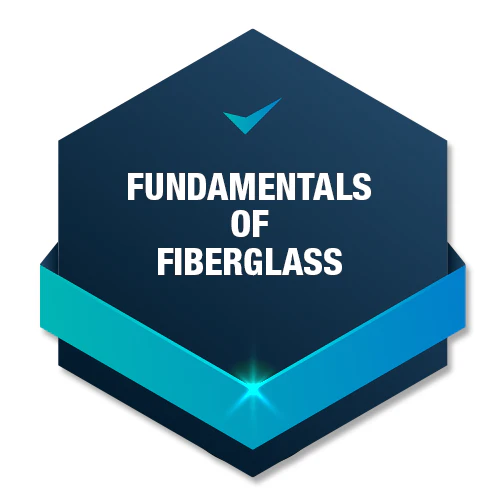
Fundamentals of Fiberglass
Composites are materials made up of individual components, whose combined physical strength exceeds the properties of either of them individually. In the case of composite laminates, there are two basic elements involved: fibrous reinforcement (such as Fiberglass or Carbon Fiber) and resin. These two elements are not meant to be used exclusively--they are meant to be combined. In doing so, they bond mechanically and chemically to form a hard, laminate part that cannot be reformed.
Fundamentals of Fiberglass
Composites are materials made up of individual components, whose combined physical strength exceeds the properties of either of them individually. In the case of composite laminates, there are two basic...
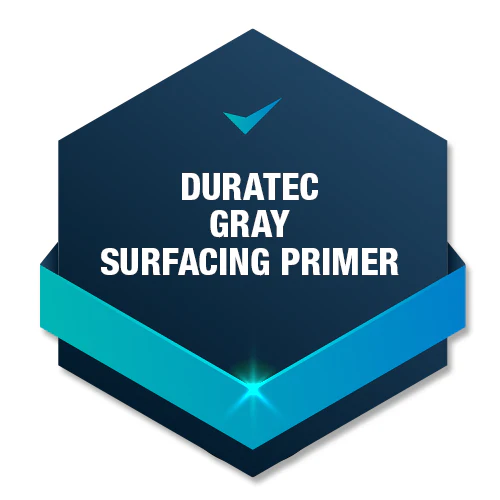
Duratec Gray Surfacing Primer
This is an all in one coat! Duratec Polyester Surfacing Primer provides rapid coat build-up and a smooth surface with high gloss. Use it with composite plugs and patterns, and to prime a growing number of wood products-including furniture, musical instruments, and architectural applications.
Duratec Gray Surfacing Primer
This is an all in one coat! Duratec Polyester Surfacing Primer provides rapid coat build-up and a smooth surface with high gloss. Use it with composite plugs and patterns, and...
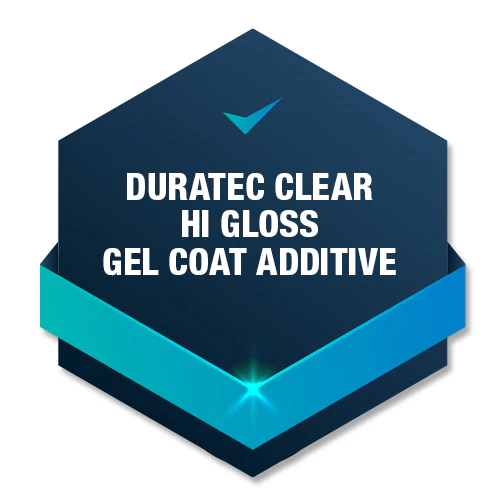
Duratec Clear Hi-Gloss Gel Coat Additive
Get a superior finish, add quality, and save time and labor for your composite parts. Blend #1040-B Hi-Gloss Additive with gel coats for repairs, or upgrade the surface of molds or parts.
Duratec Clear Hi-Gloss Gel Coat Additive
Get a superior finish, add quality, and save time and labor for your composite parts. Blend #1040-B Hi-Gloss Additive with gel coats for repairs, or upgrade the surface of molds...
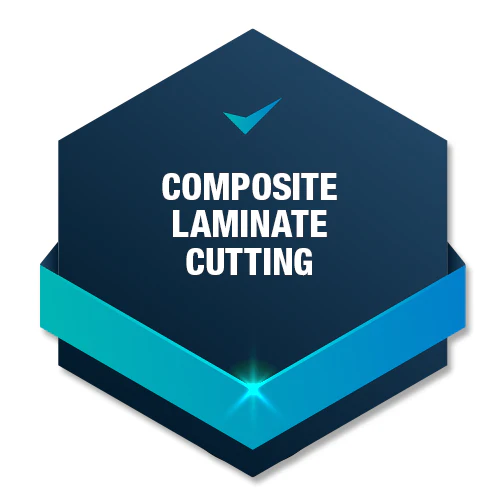
Composite Laminate Cutting
Cutting composites is uniquely difficult when compared to cutting wood, metal, or other more traditional building materials. There are a several reasons for this, but there are three primary factors which impact tool selection when cutting laminates.
Composite Laminate Cutting
Cutting composites is uniquely difficult when compared to cutting wood, metal, or other more traditional building materials. There are a several reasons for this, but there are three primary factors...

About Reinforcements
The physical properties of composites are fiber dominant. This means that when the resin and fiber are combined, their performance remains most like the individual fiber properties. Test data shows that the fibrous reinforcement is the component carrying the majority of the load. For this reason, fabric selection is critical when designing composite structures.
About Reinforcements
The physical properties of composites are fiber dominant. This means that when the resin and fiber are combined, their performance remains most like the individual fiber properties. Test data shows...

Submit Your Photos & Videos
Fibre Glast wants to share photos or videos of your composite project with thousands of customers and fans. Whether it's a groundbreaking university prototype, a great car modification, a unique fiberglass design or an upgraded R/C vehicle, we'd love to see it, promote it and give you credit. Our customers amaze us, and each other, with their craftsmanship in projects built in laboratories and home garages.
Submit Your Photos & Videos
Fibre Glast wants to share photos or videos of your composite project with thousands of customers and fans. Whether it's a groundbreaking university prototype, a great car modification, a unique...
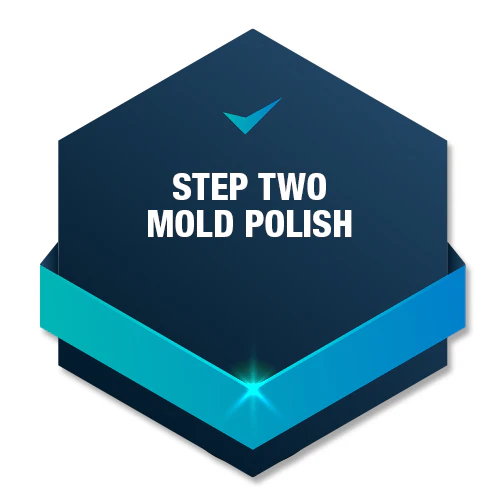
Step Two Mold Polish
Water-based fast-cut compound and polish for composites and other surfaces. Generally used to remove fine scratches from mold and part surfaces. Great for polishing molds, parts, and painted surfaces.
Step Two Mold Polish
Water-based fast-cut compound and polish for composites and other surfaces. Generally used to remove fine scratches from mold and part surfaces. Great for polishing molds, parts, and painted surfaces.
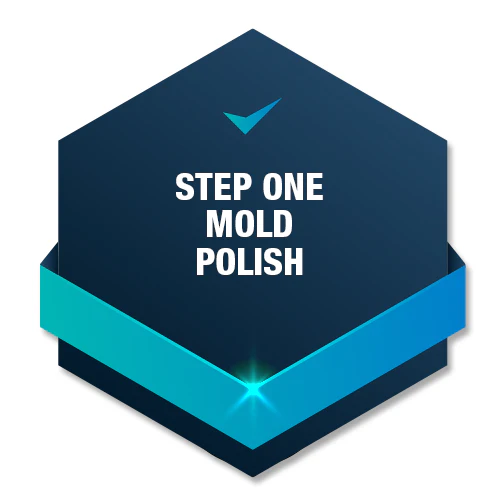
Step One Mold Polish
Generally used to remove wet sanding scratches (600-1000 grit) from mold surfaces. Removes wax and styrene buildup from mold surfaces
Step One Mold Polish
Generally used to remove wet sanding scratches (600-1000 grit) from mold surfaces. Removes wax and styrene buildup from mold surfaces

Setting Up a Composite Shop
Over the past fifty years, Fibre Glast Developments has supplied thousands of new customers with materials they had never seen, and taught them to use them successfully. However, we rarely discuss the lessons we have learned about organizing the composite shop itself. One of the most challenging hurdles a fabricator will face is just "how" to begin. This includes setting up their first composites shop.
Setting Up a Composite Shop
Over the past fifty years, Fibre Glast Developments has supplied thousands of new customers with materials they had never seen, and taught them to use them successfully. However, we rarely...
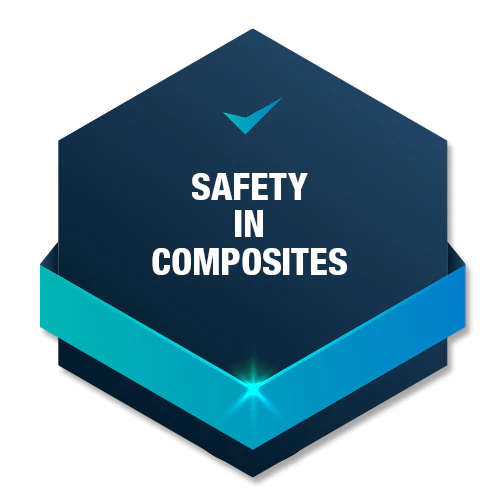
Safety in Composites
The two components of composite work (reinforcement and resins) always require attention to safety. Reinforcements will tend to provide a problem when cutting. The small fibers will travel through the air, so care must be taken to avoid breathing these fibers. Often a dust mask is satisfactory, but a respirator offers more complete protection.
Safety in Composites
The two components of composite work (reinforcement and resins) always require attention to safety. Reinforcements will tend to provide a problem when cutting. The small fibers will travel through the...
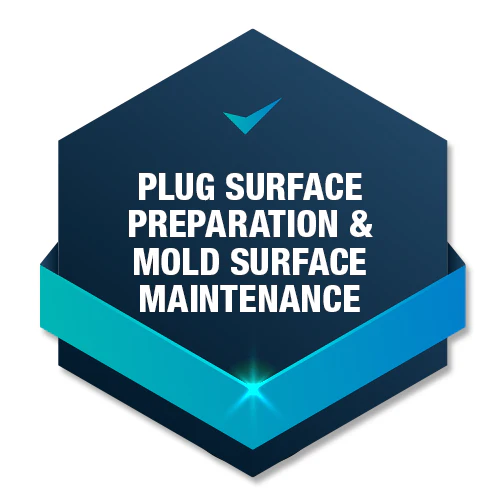
Plug Surface Preparation & Mold Surface Maintenance
The majority of current composite applications focus on molding for rapid part reproduction and maximization of the material properties themselves. Regardless of the type of mold used, female cavity or male plug, the mold surface is critical. This white paper describes the techniques necessary to achieve a Class 'A' mold surface finish as well as the steps required to maintain it.
Plug Surface Preparation & Mold Surface Maintenance
The majority of current composite applications focus on molding for rapid part reproduction and maximization of the material properties themselves. Regardless of the type of mold used, female cavity or...

Plug Construction Guide
The first step in the fiberglass mold-building process is to create a plug. A plug is the form which is to be duplicated and is usually a representation of the finished part. This can be an actual part or a mock-up of a part. When planning for the plug and mold, many factors must be taken into consideration, especially surface finish, draft angles, undercuts, and method of production. A composite mold that is going to be used for vacuum bagging, vacuum infusion or closed-molding processes will require large flanges.
Plug Construction Guide
The first step in the fiberglass mold-building process is to create a plug. A plug is the form which is to be duplicated and is usually a representation of the...
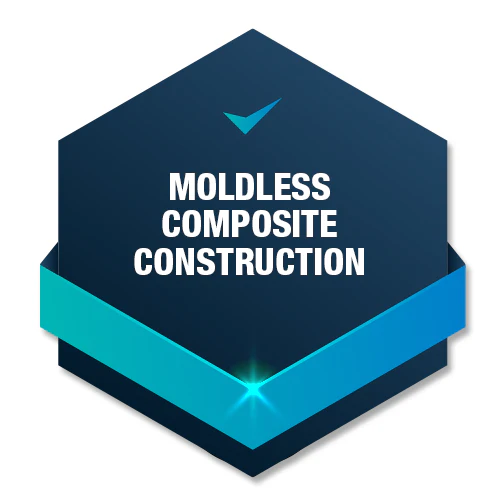
Moldless Composite Construction
Until recently, producing a single, functional part from composite materials was impractical. Much of the problem was due to the rough and wavy surface that usually resulted when these materials were not used inside a mold. Also, non-artistic builders find it intimidating to sculpt the shapes freehand. Finally, many resin materials are formulated to be used inside a mold and do not work properly when exposed to air. Consequently, someone wanting to build a single part or prototype, even the plug for a mold, would often be discouraged and turn away from composites before even getting started!
Moldless Composite Construction
Until recently, producing a single, functional part from composite materials was impractical. Much of the problem was due to the rough and wavy surface that usually resulted when these materials...
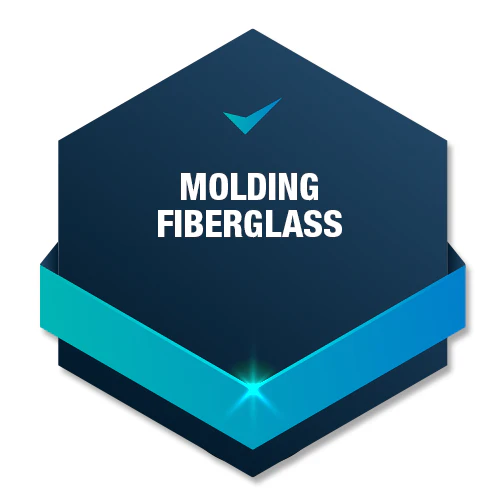
Molding Fiberglass
Composites offer tremendous possibilities for part fabrication once a few basic concepts are understood. The key lies in understanding the different materials available, their applications, and the best ways to handle them.
Molding Fiberglass
Composites offer tremendous possibilities for part fabrication once a few basic concepts are understood. The key lies in understanding the different materials available, their applications, and the best ways to...
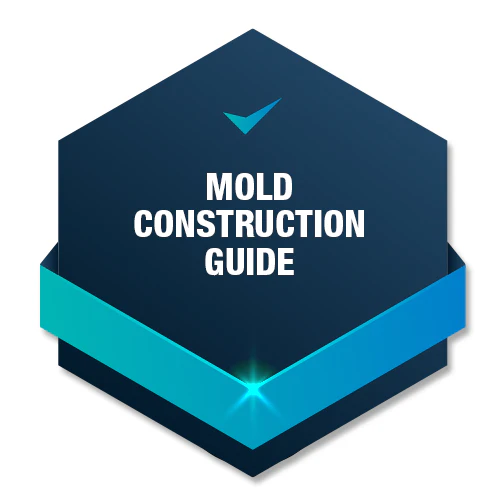
Mold Construction Guide
What is "molding"? Molding has been used for years to form metal products like car body panels, home appliances, and industrial fixtures. Metal stamping dies are cumbersome and cost thousands of dollars to produce. Most often, only larger companies can afford to build, operate and maintain these tools. Composite materials offer a cost effective way for anyone to make even large production runs of identical parts in molds they can produce themselves.
Mold Construction Guide
What is "molding"? Molding has been used for years to form metal products like car body panels, home appliances, and industrial fixtures. Metal stamping dies are cumbersome and cost thousands...
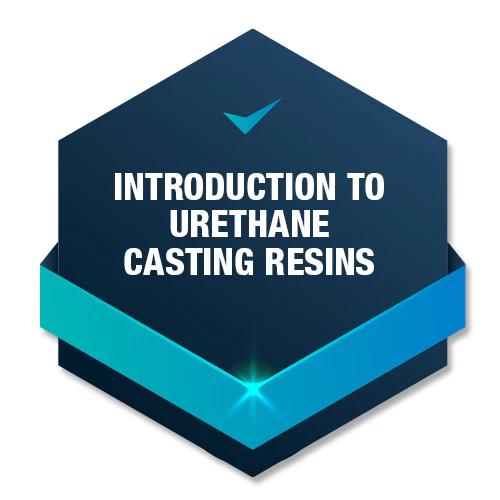
Introduction to Urethane Casting Resins
Fibre Glast casting resins are designed to be poured into open or closed molds, without reinforcement, to make short-run parts, prototypes, molds or tools. Urethanes are polymers with a wide range of properties, strengths, and uses, from custom elastic machine parts and pliable molds to hard plastic prototypes, coating and lenses.
Introduction to Urethane Casting Resins
Fibre Glast casting resins are designed to be poured into open or closed molds, without reinforcement, to make short-run parts, prototypes, molds or tools. Urethanes are polymers with a wide...

Guidelines for Sandwich Core Materials
The rising demand for new materials with higher strength to weight ratios has created a dramatic growth in sandwich composite technology. Sandwich construction employs a lightweight core that has a flexural strength and flexural modulus far exceeding that of the skin laminates alone.
Guidelines for Sandwich Core Materials
The rising demand for new materials with higher strength to weight ratios has created a dramatic growth in sandwich composite technology. Sandwich construction employs a lightweight core that has a...
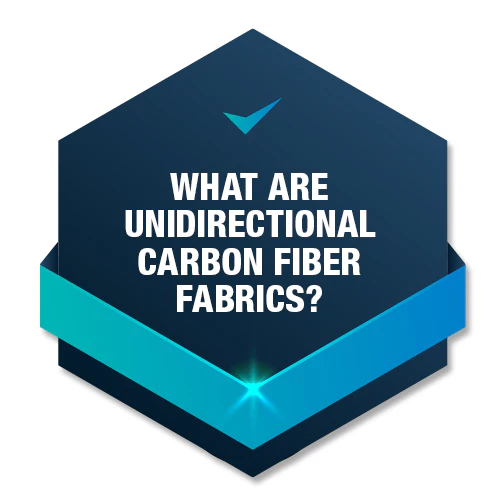
What are Unidirectional Carbon Fiber Fabrics?
Unidirectional carbon fiber fabric is a type of carbon reinforcement that is non-woven and features all fibers running in a single, parallel direction. With this style of fabric, there are no gaps between fibers, and those fibers lay flat. There is no cross-section weave that divides the fiber strength in half with another direction. This allows for the concentrated density of fibers that provide maximum longitudinal tensile potential--greater than any other weave of fabric. For comparison, this is 3 times the longitudinal tensile strength of structural steel at one-fifth of the weight density.
What are Unidirectional Carbon Fiber Fabrics?
Unidirectional carbon fiber fabric is a type of carbon reinforcement that is non-woven and features all fibers running in a single, parallel direction. With this style of fabric, there are...

What Are Prepegs?
"Prepreg" is the common term for a reinforcing fabric which has been pre-impregnated with a resin system. This resin system (typically epoxy) already includes the proper curing agent. As a result, the prepreg is ready to lay into the mold without the addition of any more resin. In order for the laminate to cure, it is necessary to use a combination of pressure and heat.
What Are Prepegs?
"Prepreg" is the common term for a reinforcing fabric which has been pre-impregnated with a resin system. This resin system (typically epoxy) already includes the proper curing agent. As a...

Vacuum Bagging Equipment & Techniques for Room-Temp Applications
Vacuum bagging is a technique employed to create mechanical pressure on a laminate during its cure cycle. Pressurizing a composite lamination serves several functions. First, it removes trapped air between layers. Second, it compacts the fiber layers for efficient force transmission among fiber bundles and prevents shifting of fiber orientation during cure. Third, it reduces humidity. Finally, and most important, the vacuum bagging technique optimizes the fiber-to-resin ratio in the composite part. These advantages have for years enabled aerospace and racing industries to maximize the physical properties of advanced composite materials such as carbon, aramid, and epoxy.
Vacuum Bagging Equipment & Techniques for Room-Temp Applications
Vacuum bagging is a technique employed to create mechanical pressure on a laminate during its cure cycle. Pressurizing a composite lamination serves several functions. First, it removes trapped air between...

Using Glitterflake
Fibre Glast Glitterflakes are .015" metallized polyesters flakes typically used with a clear gel coat. We recommend our #180 Clear Gel Coat which is an ISO/NPG marine gel coat with excellent weathering properties and a high gloss suitable for glitterflake.
Using Glitterflake
Fibre Glast Glitterflakes are .015" metallized polyesters flakes typically used with a clear gel coat. We recommend our #180 Clear Gel Coat which is an ISO/NPG marine gel coat with...
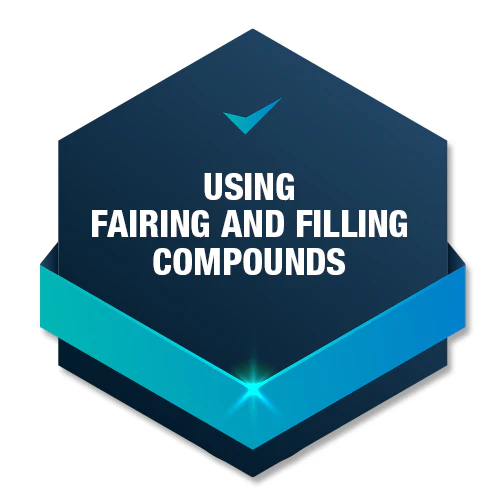
Using Fairing and Filling Compounds
Fairing and filling compounds are designed to repair and shape finished composite parts while retaining as much of the original piece strength as possible. The versatile compounds can be used for filling, adhering, building, shaping and finishing composites and other materials.
Using Fairing and Filling Compounds
Fairing and filling compounds are designed to repair and shape finished composite parts while retaining as much of the original piece strength as possible. The versatile compounds can be used...
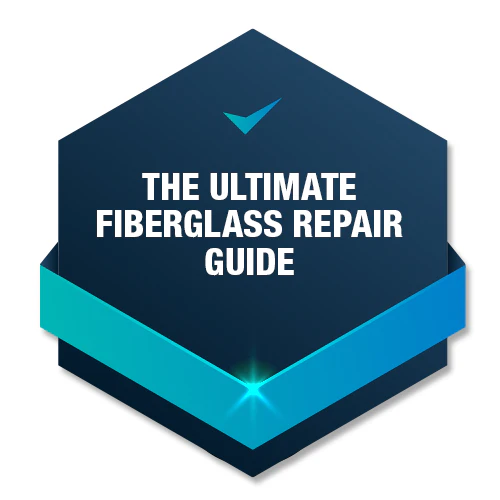
The Ultimate Fiberglass Repair Guide
Composites offer numerous advantages over conventional building materials. One advantage that might not be obvious is the ease and durability of repairs. Because many lack the knowledge to repair composite parts and molds, damaged items are often replaced; for those that have a beginner's understanding, the process may seem intimidating at first. Fear not, composite parts are often easier to repair than parts made from traditional materials. In this article we will provide a basic understanding of composite repairs, as well as detailed steps and considerations to follow for both structural and cosmetic repairs.
The Ultimate Fiberglass Repair Guide
Composites offer numerous advantages over conventional building materials. One advantage that might not be obvious is the ease and durability of repairs. Because many lack the knowledge to repair composite...
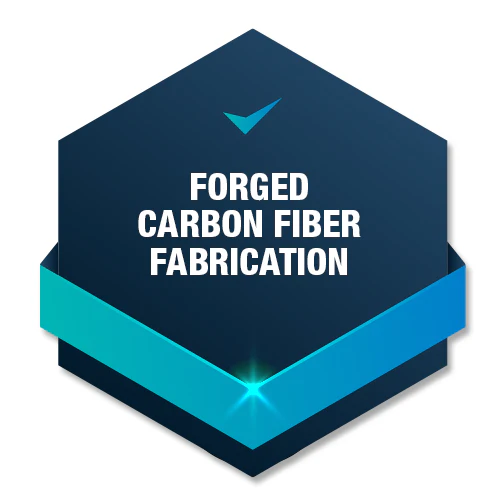
Forged Carbon Fiber Fabrication
While carbon fiber sheet fabrication can be a complex process, there are a few steps you can take to make it easier. Here are some tips to simplify carbon fiber sheet fabrication.
Forged Carbon Fiber Fabrication
While carbon fiber sheet fabrication can be a complex process, there are a few steps you can take to make it easier. Here are some tips to simplify carbon fiber...

What do I need for my Composite Project?
How many times has this happened to you: You're ready to begin your composite project and no sooner than you get started you realize you don't have the right mixing supplies? Or maybe you finish waxing your mold only to realize you don't have any PVA. In order to make sure your project is a success-and make sure you don't waste valuable time and money-compiling a complete list of materials needed for the job is a vital step to any project.
What do I need for my Composite Project?
How many times has this happened to you: You're ready to begin your composite project and no sooner than you get started you realize you don't have the right mixing...
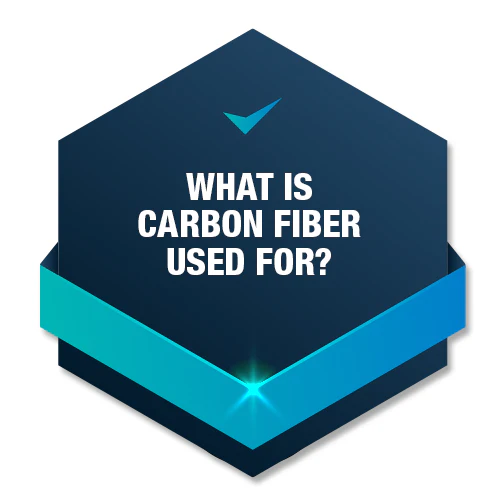
What is Carbon Fiber Used For?
Carbon fiber is made from organic polymers, which consist of long strings of molecules held together by carbon atoms. Most carbon fibers (about 90%) are made from the polyacrylonitrile (PAN) process. A small amount (about 10%) are manufactured from rayon or the petroleum pitch process.
What is Carbon Fiber Used For?
Carbon fiber is made from organic polymers, which consist of long strings of molecules held together by carbon atoms. Most carbon fibers (about 90%) are made from the polyacrylonitrile (PAN)...
-

Gel Coat Application Guide
Gel coat is the most common surface coating used in the fabrication and repair of fiberglass reinforced products. Gel Coat is a specially formulated two-part polyester resin that is designed to be the first layer of resin applied in a mold when making a polyester or vinyl ester composite part. It is intended to create an opaque surface which will completely block glass pattern show-through. Polyester resins in general, and specifically gel coats, are naturally UV resistant, and properly cured parts can be submerged in water. Most boats are made using gel coat with polyester resin and fiberglass.
Gel Coat Application Guide
Learn MoreGel coat is the most common surface coating used in the fabrication and repair of fiberglass reinforced products. Gel Coat is a specially formulated two-part polyester resin that is designed...
-

Carbon Fiber vs. Kevlar: Material Strength and Impact Resistance
Many engineers, designers, and buyers are often uncertain about the differences between carbon fiber and Kevlar in practical applications. This guide explains the science, strengths, and trade-offs of carbon fiber versus Kevlar, helping you make the best choice for your needs. Carbon Fiber vs Kevlar Materials? Before diving into performance, it’s important to understand what these materials are and how they’re made. What is Carbon Fiber? Carbon fiber is a lightweight, high-strength material made from thin strands of crystalline carbon atoms. It’s known for its exceptional stiffness, low weight, and high tensile strength. Typically used in aerospace, motorsports, and robotics, carbon fiber is ideal for applications where rigidity and weight savings are critical. From F1 car panels to drone frames, its structural efficiency is unmatched. Carbon Fiber Strength and Impact Resistance Carbon fiber offers superior tensile strength (3.5–6.0 GPa) and stiffness (Young’s Modulus up to 800 GPa), but is brittle under impact. It tends to crack or shatter when subjected to sudden force, making it less suitable for high-impact environments. What is Kevlar? Kevlar is a para-aramid synthetic fiber known for its toughness, flexibility, and abrasion resistance. It’s a staple in protective gear and industrial applications. Kevlar’s strength lies in its energy absorption and fracture resistance. It stretches under stress, dispersing energy rather than breaking, making it better for impact-prone applications. Kevlar Strength and Impact Resistance Kevlar has slightly lower tensile strength (3.0–3.6 GPa) than carbon fiber, but its impact resistance is significantly higher. It elongates up to 4% before breaking, allowing it to absorb and dissipate energy effectively. Kevlar vs Carbon Fiber: Material Properties and Performance Comparison Tensile Strength Carbon fiber typically offers higher tensile strength, ranging from 3.5 to 6.0 GPa. Kevlar is slightly lower, at 3.0 to 3.6 GPa, but still strong enough for most protective and industrial uses. Stiffness (Young’s Modulus) Carbon fiber is stiffer, with a modulus between 200 and 800 GPa. Kevlar is more flexible, ranging from 60 to 120 GPa. Elongation to Break Kevlar can stretch 2.5% to 4.0% before breaking. Carbon fiber only stretches about 1.5%, making it more prone to cracking under stress. Impact Resistance Kevlar effectively absorbs and disperses energy, making it ideal for high-impact applications. Carbon fiber is more prone to shattering. Density Kevlar is slightly lighter (1.44 g/cm³) than carbon fiber (1.6 g/cm³), which can be important in weight-sensitive designs. Thermal Resistance Kevlar begins to degrade above 500°C (932°F). Carbon fiber undergoes sublimation, transitioning directly from a solid to a gaseous state at high temperatures. The temperature at which this process begins is around 3,652 - 3,697°C (6,600 - 6,687°F). Abrasion Resistance Kevlar offers excellent abrasion resistance. Carbon fiber is moderate in this area. Cost Carbon fiber costs around $10–$20 per pound. Kevlar ranges from $15–$25 per pound. Carbon Fiber vs Kevlar Property Comparison Property Carbon Fiber Kevlar Tensile Strength 3.5 – 6.0 GPa 3.0 – 3.6 GPa Young’s Modulus 200 – 800 GPa 60 – 120 GPa Elongation to Break ~1.5% ~2.5 – 4.0% Impact Resistance Low Very High Density ~1.6 g/cm³ ~1.44 g/cm³ Thermal Resistance Sublimates >3652°C (6600°F) Degrades > 500°C (932°F) Abrasion Resistance Moderate Excellent Cost per lb (avg) $10–$20 $15–$25 How These Materials Behave Under Impact Carbon fiber is incredibly stiff and strong, but doesn’t handle impact well, as it tends to fracture or de-laminate when struck. On the other hand, Kevlar stretches and absorbs energy, making it far more reliable in high-impact scenarios like industrial safety gear or blast shields. Cost, Fabrication, and Practical Tradeoffs Carbon fiber is brittle and challenging to machine, while Kevlar is tough but difficult to cut or drill. Kevlar also degrades faster under UV and needs protective coatings. Carbon fiber is more stable in harsh environments but can be more expensive to repair. Kevlar may require more maintenance in exposed conditions, but its durability makes it a better long-term choice for rugged use. Common Applications: Where Each Material Excels Carbon Fiber in Automotive and Aerospace Used in F1 cars, supercars, and UAVs for its stiffness and low weight. Kevlar in Industrial and Safety Equipment It is used for safety helmets, reinforced pressure vessels and pipes due to its abrasion and impact resistance. Carbon Fiber in Drones and Robotics Provides rigidity and precision for lightweight, high-performance frames and components. Kevlar in Sports & Recreation Applications Used in kayaks and canoes and hockey sticks and tennis rackets where fatigue resistance and abrasion resistance are needed most. Use Cases and Preferred Material Industry/Application Material Rationale F1 Cars / Supercars Carbon High stiffness, low weight Canoes and Kayaks Kevlar Abrasion and impact resistant Drones / UAV Frames Carbon Stiff, lightweight, performance-driven Tactical Helmets Kevlar Flexible and impact-absorbing Robotics End Effectors Carbon Precise and weight-optimized Recommended Products for Your Project For Carbon Fiber Applications: Carbon Fiber Fabrics: Plain and Twill Weaves: Ideal for structural parts, panels, and lightweight builds. High Modulus Carbon Fiber Fabrics: Best for aerospace and precision applications. For Kevlar Applications: Kevlar® 49 Fabric: Excellent for abrasion resistance and reinforcement in high-wear environments. For Hybrid Needs: Carbon/Kevlar® Hybrid Twill Fabric: Combines stiffness and toughness in one fabric. Kevlar®/Carbon Hybrid Yellow Kit: Great for small builds or prototyping with visual appeal. Pros and Cons of Carbon Fiber vs Kevlar Recap Carbon Fiber: Lightweight and Rigid Pros: High tensile strength, ultra-light, extremely stiffCons: Brittle, expensive, poor in impact, and shear Kevlar: Tough and Impact-Resistant Pros: High energy absorption, durable, cut/abrasion resistantCons: Lower stiffness, UV degradation, harder to machine Hybrid Composites: Combining Strength and Toughness Hybrid composites combine carbon fiber’s stiffness with Kevlar’s toughness. Carbon is often used on the outside for rigidity, while Kevlar is layered inside to absorb impact. These hybrids are common in racing panels, aerospace skins, and high-performance equipment. Which Should You Choose? Carbon Fiber or Kevlar? Kevlar is a great choice if your projects require strong protection and energy absorption. Carbon Fiber is best for lightweight and structural needs. If you want the benefits of both, try a hybrid composite. When selecting between the two options, determine your performance requirements and choose the best material. Carbon Fiber vs Kevlar FAQ Is Carbon Fiber Stronger Than Kevlar? Yes, in tensile strength. But Kevlar is better at absorbing impact and resisting fracture. Why Isn’t Carbon Fiber Used in Protective Gear? It’s brittle and doesn’t absorb energy well, which is a must for protective applications. What Material Is More Durable Than Carbon Fiber? Kevlar, Dyneema, and hybrid aramids offer better toughness and abrasion resistance. What Fiber Is Stronger Than Kevlar? Dyneema, Zylon, and carbon nanotube fibers exceed Kevlar’s strength but have tradeoffs. What’s 10x Stronger Than Kevlar? Graphene and CNT-based materials may be, but they’re not yet practical at scale.Does Kevlar or Carbon Fiber Resist Compression Better? Carbon fiber performs better under compression. Kevlar excels in tension and impact. Are Hybrid Kevlar/Carbon Composites the Best of Both Worlds? Yes, especially in aerospace, motorsports, and high-performance equipment.
Carbon Fiber vs. Kevlar: Material Strength and Impact Resistance
Learn MoreMany engineers, designers, and buyers are often uncertain about the differences between carbon fiber and Kevlar in practical applications. This guide explains the science, strengths, and trade-offs of carbon fiber...
-

Using the Materials Calculator
Materials Calculator for Carbon Fiber, Fiberglass, Resin and more. Whether you're working with fiberglass, carbon fiber, or Kevlar, this calculator helps you determine how much material and resin you'll need based on the size and number of your parts. No more guesswork — just quick, accurate estimates that help you buy exactly what you need. It’s perfect for both beginners and seasoned professionals looking to save time and money on material planning. The Materials Calculator can be found here. INPUTS Step 1 - Enter Dimensions and Desired Thickness Start by inputting the basic measurements for your composite project: Length and Width – Enter the size of the part or mold you plan to fabricate. Desired Thickness – This determines how many layers of reinforcement you'll need. Tip: If you're not sure how thick your part should be, see below for help choosing layers and materials. Step 2 - Select Materials for Your Project Next, choose the reinforcement material you'd like to use from the drop-down menu, such as: Chopped Strand Mat Woven Fiberglass Carbon Fiber Kevlar® Not sure what to use?Consult our white paper: What Do I Need for My Composite Project? Adjusting Layers for Thickness If you know your desired thickness (e.g., 0.25"), you can increase the number of fabric layers to reach it. For example: Using 6 layers of Chopped Strand Mat will help achieve a thickness slightly over 0.25” which is ideal for mold building. Alternatively, if you already know the number of layers you want to use, the calculator will reverse-calculate the final part thickness. Note: Be sure to account for core material and coating thickness: Gel Coat / Surface Coat: Add ~0.020"–0.025" Core material: and 0.125”-2” depending on thickness you choose Paint / Clear Coat: Typically, negligible in thickness: 0.001-0.003” RESULTS On the right side of the calculator, you’ll find a summary showing: Estimated Final Thickness (excluding core and coatings) Total Fabric Required Fibre Glast sells fabrics in: Pre-packaged sizes: 1, 3, and 5 yards Cut-to-length: Starting at 10 yards Round up your order to ensure you have enough material, especially for odd shapes or layered builds. Estimate Resin RequirementsThe calculator also estimates how much resin you’ll need, based on: Formula: Resin weight = Fabric weight × 1.75This result is shown in pounds, matching how resins are sold at Fibre Glast. Be sure to check the product description for weight per unit: Example: A gallon of 78-A Polyester Resin weighs ~9 lbs. In Practice:If your project requires 6.429 lbs. of resin: 1 gallon (9 lbs.) covers it with margin If you’re skilled at hand lay-up and want less waste, 3 quarts (~6 lbs.) may suffice Print the results for future reference. Final Thoughts The Fibre Glast Materials Calculator is designed to make your project planning smarter and more efficient. With just a few inputs, you’ll know: How much fabric to order. What your final part thickness will be. How much resin is needed down to the pound. Head over to the calculator and plan your next lay-up with confidence: Try it now!
Using the Materials Calculator
Learn MoreMaterials Calculator for Carbon Fiber, Fiberglass, Resin and more. Whether you're working with fiberglass, carbon fiber, or Kevlar, this calculator helps you determine how much material and resin you'll need...
-

ChromaGlast™ Troubleshooting Guide
The attached document is a reprint of the PPG book A Guide to Identifying and Solving Common Paint Problems. The book was originally printed in 1993, and was out of print prior to the 2017 launch of ChromaGlastTM Premium Paint for Fiberglass and Composites. This book with photos does an excellent job of describing and troubleshooting typical problems with paint applications.
ChromaGlast™ Troubleshooting Guide
Learn MoreThe attached document is a reprint of the PPG book A Guide to Identifying and Solving Common Paint Problems. The book was originally printed in 1993, and was out of...
-

ChromaGlast™ Paint vs. Gel Coat
The purpose of this article is to compare and explain the types of applications where gel coat or ChromaGlastTM Paint would be used. If you are interested in troubleshooting your gel coat or ChromaGlastTM application, please see either our Gel Coat Troubleshooting article or ChromaGlastTM Troubleshooting article.
ChromaGlast™ Paint vs. Gel Coat
Learn MoreThe purpose of this article is to compare and explain the types of applications where gel coat or ChromaGlastTM Paint would be used. If you are interested in troubleshooting your...
-

Casting and Molding: Urethanes vs. Composites
Casting urethanes are versatile materials that can be used alone, with one another, or even with composites. From flexible molds to durable, impact-resistant parts, our selection of urethanes provides a wide range of properties for a variety of uses.
Casting and Molding: Urethanes vs. Composites
Learn MoreCasting urethanes are versatile materials that can be used alone, with one another, or even with composites. From flexible molds to durable, impact-resistant parts, our selection of urethanes provides a...
-

About Resins
Composites are a combination of fiber reinforcements and resin. The physical properties of composites are fiber dominate, meaning that the performance of finished parts is most directly related to that of the reinforcement. So what role does a resin play? This article will answer that and provide a basic understanding of the resin options available at Fibre Glast.
About Resins
Learn MoreComposites are a combination of fiber reinforcements and resin. The physical properties of composites are fiber dominate, meaning that the performance of finished parts is most directly related to that...
-

Getting Started in Composites
The exciting thing about composites is that an ordinary person can make things that they have never been able to make before, such as bathtubs, a boat, or a motorcycle! Race car bodies, canoes, airplanes, model aircraft, jet skis, boats, sculptures as well as traditional industrial molding and model making have taken on a new dimension as fiberglass becomes less of a mystery, easier to use, and easier to buy!
Getting Started in Composites
Learn MoreThe exciting thing about composites is that an ordinary person can make things that they have never been able to make before, such as bathtubs, a boat, or a motorcycle!...
-

Gel Coat Troubleshooting Guide
A proper gel coat application can often mean the difference between the look of a professionally fabricated part, and an amateurish attempt. Gel coating is one of, if not the most common problem area when working with composites, and can be a struggle for even experienced fabricators.
Gel Coat Troubleshooting Guide
Learn MoreA proper gel coat application can often mean the difference between the look of a professionally fabricated part, and an amateurish attempt. Gel coating is one of, if not the...
-

Fundamentals of Fiberglass
Composites are materials made up of individual components, whose combined physical strength exceeds the properties of either of them individually. In the case of composite laminates, there are two basic elements involved: fibrous reinforcement (such as Fiberglass or Carbon Fiber) and resin. These two elements are not meant to be used exclusively--they are meant to be combined. In doing so, they bond mechanically and chemically to form a hard, laminate part that cannot be reformed.
Fundamentals of Fiberglass
Learn MoreComposites are materials made up of individual components, whose combined physical strength exceeds the properties of either of them individually. In the case of composite laminates, there are two basic...
-

Duratec Gray Surfacing Primer
This is an all in one coat! Duratec Polyester Surfacing Primer provides rapid coat build-up and a smooth surface with high gloss. Use it with composite plugs and patterns, and to prime a growing number of wood products-including furniture, musical instruments, and architectural applications.
Duratec Gray Surfacing Primer
Learn MoreThis is an all in one coat! Duratec Polyester Surfacing Primer provides rapid coat build-up and a smooth surface with high gloss. Use it with composite plugs and patterns, and...
-

Duratec Clear Hi-Gloss Gel Coat Additive
Get a superior finish, add quality, and save time and labor for your composite parts. Blend #1040-B Hi-Gloss Additive with gel coats for repairs, or upgrade the surface of molds or parts.
Duratec Clear Hi-Gloss Gel Coat Additive
Learn MoreGet a superior finish, add quality, and save time and labor for your composite parts. Blend #1040-B Hi-Gloss Additive with gel coats for repairs, or upgrade the surface of molds...
-

Composite Laminate Cutting
Cutting composites is uniquely difficult when compared to cutting wood, metal, or other more traditional building materials. There are a several reasons for this, but there are three primary factors which impact tool selection when cutting laminates.
Composite Laminate Cutting
Learn MoreCutting composites is uniquely difficult when compared to cutting wood, metal, or other more traditional building materials. There are a several reasons for this, but there are three primary factors...
-

About Reinforcements
The physical properties of composites are fiber dominant. This means that when the resin and fiber are combined, their performance remains most like the individual fiber properties. Test data shows that the fibrous reinforcement is the component carrying the majority of the load. For this reason, fabric selection is critical when designing composite structures.
About Reinforcements
Learn MoreThe physical properties of composites are fiber dominant. This means that when the resin and fiber are combined, their performance remains most like the individual fiber properties. Test data shows...
-

Submit Your Photos & Videos
Fibre Glast wants to share photos or videos of your composite project with thousands of customers and fans. Whether it's a groundbreaking university prototype, a great car modification, a unique fiberglass design or an upgraded R/C vehicle, we'd love to see it, promote it and give you credit. Our customers amaze us, and each other, with their craftsmanship in projects built in laboratories and home garages.
Submit Your Photos & Videos
Learn MoreFibre Glast wants to share photos or videos of your composite project with thousands of customers and fans. Whether it's a groundbreaking university prototype, a great car modification, a unique...
-

Step Two Mold Polish
Water-based fast-cut compound and polish for composites and other surfaces. Generally used to remove fine scratches from mold and part surfaces. Great for polishing molds, parts, and painted surfaces.
Step Two Mold Polish
Learn MoreWater-based fast-cut compound and polish for composites and other surfaces. Generally used to remove fine scratches from mold and part surfaces. Great for polishing molds, parts, and painted surfaces.
-

Step One Mold Polish
Generally used to remove wet sanding scratches (600-1000 grit) from mold surfaces. Removes wax and styrene buildup from mold surfaces
Step One Mold Polish
Learn MoreGenerally used to remove wet sanding scratches (600-1000 grit) from mold surfaces. Removes wax and styrene buildup from mold surfaces
-

Setting Up a Composite Shop
Over the past fifty years, Fibre Glast Developments has supplied thousands of new customers with materials they had never seen, and taught them to use them successfully. However, we rarely discuss the lessons we have learned about organizing the composite shop itself. One of the most challenging hurdles a fabricator will face is just "how" to begin. This includes setting up their first composites shop.
Setting Up a Composite Shop
Learn MoreOver the past fifty years, Fibre Glast Developments has supplied thousands of new customers with materials they had never seen, and taught them to use them successfully. However, we rarely...
-

Safety in Composites
The two components of composite work (reinforcement and resins) always require attention to safety. Reinforcements will tend to provide a problem when cutting. The small fibers will travel through the air, so care must be taken to avoid breathing these fibers. Often a dust mask is satisfactory, but a respirator offers more complete protection.
Safety in Composites
Learn MoreThe two components of composite work (reinforcement and resins) always require attention to safety. Reinforcements will tend to provide a problem when cutting. The small fibers will travel through the...
-

Plug Surface Preparation & Mold Surface Maintenance
The majority of current composite applications focus on molding for rapid part reproduction and maximization of the material properties themselves. Regardless of the type of mold used, female cavity or male plug, the mold surface is critical. This white paper describes the techniques necessary to achieve a Class 'A' mold surface finish as well as the steps required to maintain it.
Plug Surface Preparation & Mold Surface Maintenance
Learn MoreThe majority of current composite applications focus on molding for rapid part reproduction and maximization of the material properties themselves. Regardless of the type of mold used, female cavity or...
-

Plug Construction Guide
The first step in the fiberglass mold-building process is to create a plug. A plug is the form which is to be duplicated and is usually a representation of the finished part. This can be an actual part or a mock-up of a part. When planning for the plug and mold, many factors must be taken into consideration, especially surface finish, draft angles, undercuts, and method of production. A composite mold that is going to be used for vacuum bagging, vacuum infusion or closed-molding processes will require large flanges.
Plug Construction Guide
Learn MoreThe first step in the fiberglass mold-building process is to create a plug. A plug is the form which is to be duplicated and is usually a representation of the...
-

Moldless Composite Construction
Until recently, producing a single, functional part from composite materials was impractical. Much of the problem was due to the rough and wavy surface that usually resulted when these materials were not used inside a mold. Also, non-artistic builders find it intimidating to sculpt the shapes freehand. Finally, many resin materials are formulated to be used inside a mold and do not work properly when exposed to air. Consequently, someone wanting to build a single part or prototype, even the plug for a mold, would often be discouraged and turn away from composites before even getting started!
Moldless Composite Construction
Learn MoreUntil recently, producing a single, functional part from composite materials was impractical. Much of the problem was due to the rough and wavy surface that usually resulted when these materials...
-

Molding Fiberglass
Composites offer tremendous possibilities for part fabrication once a few basic concepts are understood. The key lies in understanding the different materials available, their applications, and the best ways to handle them.
Molding Fiberglass
Learn MoreComposites offer tremendous possibilities for part fabrication once a few basic concepts are understood. The key lies in understanding the different materials available, their applications, and the best ways to...
-

Mold Construction Guide
What is "molding"? Molding has been used for years to form metal products like car body panels, home appliances, and industrial fixtures. Metal stamping dies are cumbersome and cost thousands of dollars to produce. Most often, only larger companies can afford to build, operate and maintain these tools. Composite materials offer a cost effective way for anyone to make even large production runs of identical parts in molds they can produce themselves.
Mold Construction Guide
Learn MoreWhat is "molding"? Molding has been used for years to form metal products like car body panels, home appliances, and industrial fixtures. Metal stamping dies are cumbersome and cost thousands...
-

Introduction to Urethane Casting Resins
Fibre Glast casting resins are designed to be poured into open or closed molds, without reinforcement, to make short-run parts, prototypes, molds or tools. Urethanes are polymers with a wide range of properties, strengths, and uses, from custom elastic machine parts and pliable molds to hard plastic prototypes, coating and lenses.
Introduction to Urethane Casting Resins
Learn MoreFibre Glast casting resins are designed to be poured into open or closed molds, without reinforcement, to make short-run parts, prototypes, molds or tools. Urethanes are polymers with a wide...
-

Guidelines for Sandwich Core Materials
The rising demand for new materials with higher strength to weight ratios has created a dramatic growth in sandwich composite technology. Sandwich construction employs a lightweight core that has a flexural strength and flexural modulus far exceeding that of the skin laminates alone.
Guidelines for Sandwich Core Materials
Learn MoreThe rising demand for new materials with higher strength to weight ratios has created a dramatic growth in sandwich composite technology. Sandwich construction employs a lightweight core that has a...
-

What are Unidirectional Carbon Fiber Fabrics?
Unidirectional carbon fiber fabric is a type of carbon reinforcement that is non-woven and features all fibers running in a single, parallel direction. With this style of fabric, there are no gaps between fibers, and those fibers lay flat. There is no cross-section weave that divides the fiber strength in half with another direction. This allows for the concentrated density of fibers that provide maximum longitudinal tensile potential--greater than any other weave of fabric. For comparison, this is 3 times the longitudinal tensile strength of structural steel at one-fifth of the weight density.
What are Unidirectional Carbon Fiber Fabrics?
Learn MoreUnidirectional carbon fiber fabric is a type of carbon reinforcement that is non-woven and features all fibers running in a single, parallel direction. With this style of fabric, there are...
-

What Are Prepegs?
"Prepreg" is the common term for a reinforcing fabric which has been pre-impregnated with a resin system. This resin system (typically epoxy) already includes the proper curing agent. As a result, the prepreg is ready to lay into the mold without the addition of any more resin. In order for the laminate to cure, it is necessary to use a combination of pressure and heat.
What Are Prepegs?
Learn More"Prepreg" is the common term for a reinforcing fabric which has been pre-impregnated with a resin system. This resin system (typically epoxy) already includes the proper curing agent. As a...
-

Vacuum Bagging Equipment & Techniques for Room-Temp Applications
Vacuum bagging is a technique employed to create mechanical pressure on a laminate during its cure cycle. Pressurizing a composite lamination serves several functions. First, it removes trapped air between layers. Second, it compacts the fiber layers for efficient force transmission among fiber bundles and prevents shifting of fiber orientation during cure. Third, it reduces humidity. Finally, and most important, the vacuum bagging technique optimizes the fiber-to-resin ratio in the composite part. These advantages have for years enabled aerospace and racing industries to maximize the physical properties of advanced composite materials such as carbon, aramid, and epoxy.
Vacuum Bagging Equipment & Techniques for Room-Temp Applications
Learn MoreVacuum bagging is a technique employed to create mechanical pressure on a laminate during its cure cycle. Pressurizing a composite lamination serves several functions. First, it removes trapped air between...
-

Using Glitterflake
Fibre Glast Glitterflakes are .015" metallized polyesters flakes typically used with a clear gel coat. We recommend our #180 Clear Gel Coat which is an ISO/NPG marine gel coat with excellent weathering properties and a high gloss suitable for glitterflake.
Using Glitterflake
Learn MoreFibre Glast Glitterflakes are .015" metallized polyesters flakes typically used with a clear gel coat. We recommend our #180 Clear Gel Coat which is an ISO/NPG marine gel coat with...
-

Using Fairing and Filling Compounds
Fairing and filling compounds are designed to repair and shape finished composite parts while retaining as much of the original piece strength as possible. The versatile compounds can be used for filling, adhering, building, shaping and finishing composites and other materials.
Using Fairing and Filling Compounds
Learn MoreFairing and filling compounds are designed to repair and shape finished composite parts while retaining as much of the original piece strength as possible. The versatile compounds can be used...
-

The Ultimate Fiberglass Repair Guide
Composites offer numerous advantages over conventional building materials. One advantage that might not be obvious is the ease and durability of repairs. Because many lack the knowledge to repair composite parts and molds, damaged items are often replaced; for those that have a beginner's understanding, the process may seem intimidating at first. Fear not, composite parts are often easier to repair than parts made from traditional materials. In this article we will provide a basic understanding of composite repairs, as well as detailed steps and considerations to follow for both structural and cosmetic repairs.
The Ultimate Fiberglass Repair Guide
Learn MoreComposites offer numerous advantages over conventional building materials. One advantage that might not be obvious is the ease and durability of repairs. Because many lack the knowledge to repair composite...
-

Forged Carbon Fiber Fabrication
While carbon fiber sheet fabrication can be a complex process, there are a few steps you can take to make it easier. Here are some tips to simplify carbon fiber sheet fabrication.
Forged Carbon Fiber Fabrication
Learn MoreWhile carbon fiber sheet fabrication can be a complex process, there are a few steps you can take to make it easier. Here are some tips to simplify carbon fiber...
-

What do I need for my Composite Project?
How many times has this happened to you: You're ready to begin your composite project and no sooner than you get started you realize you don't have the right mixing supplies? Or maybe you finish waxing your mold only to realize you don't have any PVA. In order to make sure your project is a success-and make sure you don't waste valuable time and money-compiling a complete list of materials needed for the job is a vital step to any project.
What do I need for my Composite Project?
Learn MoreHow many times has this happened to you: You're ready to begin your composite project and no sooner than you get started you realize you don't have the right mixing...
-

What is Carbon Fiber Used For?
Carbon fiber is made from organic polymers, which consist of long strings of molecules held together by carbon atoms. Most carbon fibers (about 90%) are made from the polyacrylonitrile (PAN) process. A small amount (about 10%) are manufactured from rayon or the petroleum pitch process.
What is Carbon Fiber Used For?
Learn MoreCarbon fiber is made from organic polymers, which consist of long strings of molecules held together by carbon atoms. Most carbon fibers (about 90%) are made from the polyacrylonitrile (PAN)...
Videos
Videos

Scion FR-S Tuner Challenge
2012 SEMA Show Congratulations to Chris Basseglia and R Miller Auto for taking 1st Place in the Scion FR-S Tuner Challenge with their Minty FReSh FR-S! Fibre Glast is a proud sponsor of this award-winning car! In August 2012, Scion chose three custom car builders and gave them each a 2013 Scion FR-S, a $15,000 build budget, and 90 days to build the best FR-S they could. The three finished cars were viewed by an independent car show judging company on October 31, 2012 in the Scion Booth at the SEMA Show in Las Vegas. Chris Basseglia's Minty FReSh FR-S went home with 1st Place and a $10,000 prize. View Chris Basseglia of Lebanon, PA talk about his Minty FReSh FR-S in this video. Fibre Glast as a Sponsor Fibre Glast supplied R Miller Auto with materials to create pieces in the custom-made body kit on Chris Basseglia's Scion FR-S. R Miller Auto was able to use a vacuum infusion technique to create unique body features. Here's a video of R Miller Auto using Fibre Glast materials in a Vacuum Infusion application. What is Vacuum Infusion? Vacuum Infusion is a fabrication technique that uses vacuum pressure to drive resin into a laminate while in the mold. Dry materials are laid into the mold and the vacuum pressure is applied before resin is introduced. Once a complete vacuum is achieved, resin is forced into the laminate via vacuum tubing. The vacuum infusion process offers a better fiber-to-resin ratio than hand lay-up or vacuum bagging. Fibre Glast Materials Used by R Miller Auto #251 Continuous Strand Mat #580-A Yellow Sealant Tape #582 Nylon Release Peel Ply #891-A Vacuum Connector #893 Vacuum Tubing #1093 Unidirectional E-Glass #1401 EnkaFusion Nylon Matting #1403 Spiral Tubing #1408 Lantor Soric XF #1688 Stretchlon 800 Bagging Film The Other Scion FR-S Tuner Challengers Carbon Stealth FR-S by John Toca of Chicago, IL. 2nd Place. FR-S GT by Daniel Song of Orange County, CA. 3rd Place
Scion FR-S Tuner Challenge
2012 SEMA Show Congratulations to Chris Basseglia and R Miller Auto for taking 1st Place in the Scion FR-S Tuner Challenge with their Minty FReSh FR-S! Fibre Glast is a...

R Miller Auto - Vacuum Infusion Using Fibre Glast Materials
In this video R Miller Autobody used Fibre Glast materials in a vacuum infusion application. Vacuum Infusion is a technique that uses vacuum pressure to drive resin into a laminate. Dry materials are laid into the mold and the vacuum pressure is applied before resin is introduced. Once a complete vacuum is achieved, resin is forced into the laminate via vacuum tubing. The vacuum infusion process offers a better fiber-to-resin ratio than hand lay-up or vacuum bagging.
R Miller Auto - Vacuum Infusion Using Fibre Glast Materials
In this video R Miller Autobody used Fibre Glast materials in a vacuum infusion application. Vacuum Infusion is a technique that uses vacuum pressure to drive resin into a laminate....

Resin Infusion and Sandwich Core
Fibre Glast offers a wide selection of Resin Infusion Supplies and Equipment as well as a large variety of Sandwich Core Materials for use in vacuum bagging or resin infusion applications. The vacuum bagging technique is used to improve the resin/reinforcement ratio of a composite laminate by applying vacuum pressure on a composite laminate during the cure cycle. This results in stronger, lighter parts.
Resin Infusion and Sandwich Core
Fibre Glast offers a wide selection of Resin Infusion Supplies and Equipment as well as a large variety of Sandwich Core Materials for use in vacuum bagging or resin infusion...
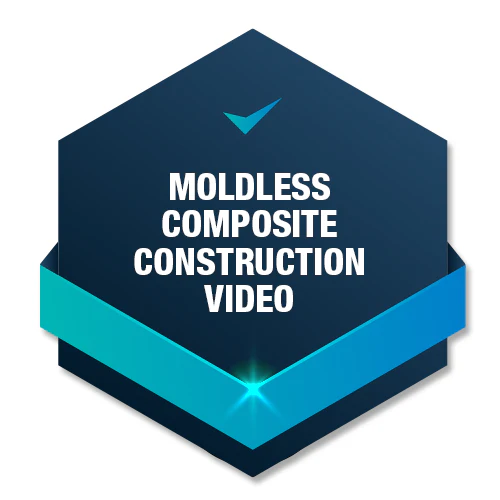
Moldless Composite Construction Video
How-To techniques for using fiberglass without a mold. Watch the complete process of building an entire rear trunk assembly for a 1923 T-Bucket Hot Rod!
Moldless Composite Construction Video
How-To techniques for using fiberglass without a mold. Watch the complete process of building an entire rear trunk assembly for a 1923 T-Bucket Hot Rod!
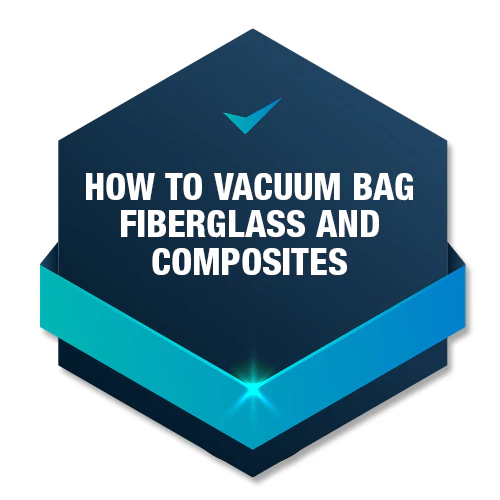
How to Vacuum Bag Fiberglass & Composites
Vacuum Bagging & Sandwich Core Construction. A complete demonstration of the plug design, construction, and the process of building a large polyester mold of an SAE Supermileage Racer. This project illustrates the development of a full-scale plug in an environment similar to a home garage.
How to Vacuum Bag Fiberglass & Composites
Vacuum Bagging & Sandwich Core Construction. A complete demonstration of the plug design, construction, and the process of building a large polyester mold of an SAE Supermileage Racer. This project...
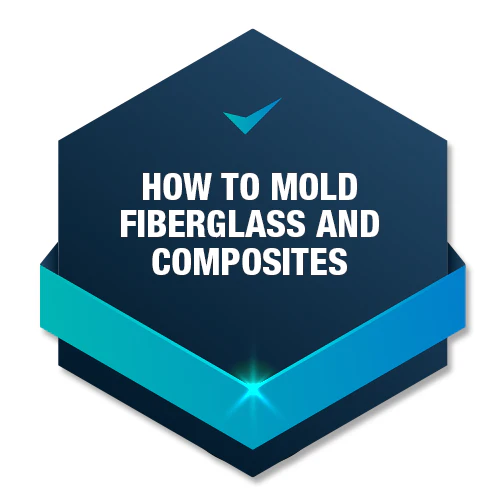
How to Mold Fiberglass & Composites
A Step-By-Step Guide To Molding Fiberglass. A simple introduction to fiberglass mold construction; explained using a model aircraft cowling. From plug, to mold, to finished fiberglass part.
How to Mold Fiberglass & Composites
A Step-By-Step Guide To Molding Fiberglass. A simple introduction to fiberglass mold construction; explained using a model aircraft cowling. From plug, to mold, to finished fiberglass part.
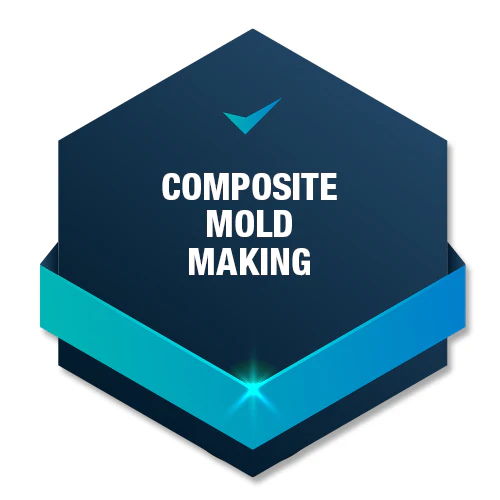
Composite Mold Making
Plug Construction & Advanced Fiberglass Mold Making. A complete demonstration of the plug design, construction, and the process of building a large polyester mold of an SAE Supermileage Racer. This project illustrates the development of a full-scale plug in an environment similar to a home garage.
Composite Mold Making
Plug Construction & Advanced Fiberglass Mold Making. A complete demonstration of the plug design, construction, and the process of building a large polyester mold of an SAE Supermileage Racer. This...
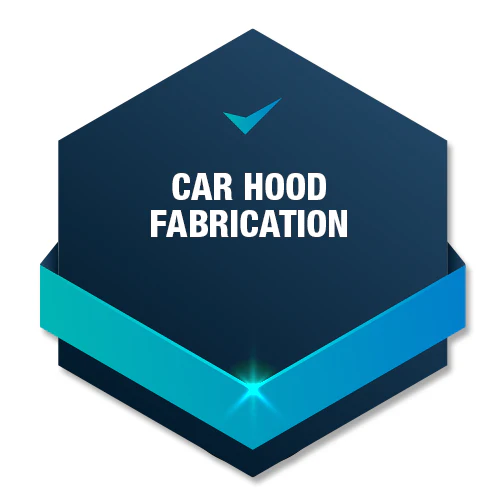
Car Hood Fabrication
A complete demonstration of fabricating a carbon fiber car hood. This project illustrates options available with our Carbon Fiber kits.
Car Hood Fabrication
A complete demonstration of fabricating a carbon fiber car hood. This project illustrates options available with our Carbon Fiber kits.
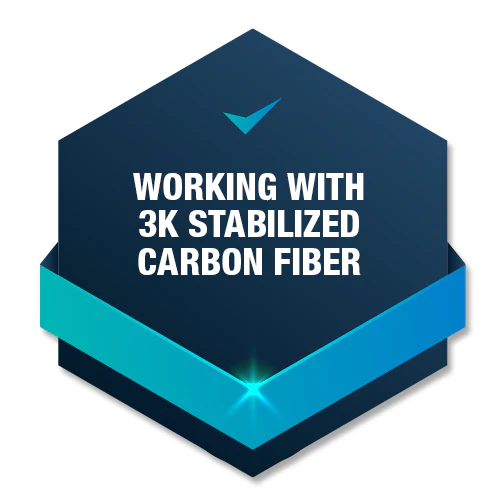
Working with 3K Stabilized Carbon Fiber
A complete demonstration of fabricating a carbon fiber car hood. This project illustrates options available with our Carbon Fiber kits.
Working with 3K Stabilized Carbon Fiber
A complete demonstration of fabricating a carbon fiber car hood. This project illustrates options available with our Carbon Fiber kits.

What to Expect When You Buy from Fibre Glast
At Fibre Glast, we package our products professionally to ensure that your purchase arrives in great condition and ready to use. From our first-quality carbon fiber, fiberglass and KEVLAR® fabrics to resins, gel coats, sandwich core and foam -- or even simple tools and supplies -- we take pride in our shipping process that delivers your materials safely and intact. Watch our video below to learn more about our packing and shipping process.
What to Expect When You Buy from Fibre Glast
At Fibre Glast, we package our products professionally to ensure that your purchase arrives in great condition and ready to use. From our first-quality carbon fiber, fiberglass and KEVLAR® fabrics...
-

Scion FR-S Tuner Challenge
2012 SEMA Show Congratulations to Chris Basseglia and R Miller Auto for taking 1st Place in the Scion FR-S Tuner Challenge with their Minty FReSh FR-S! Fibre Glast is a proud sponsor of this award-winning car! In August 2012, Scion chose three custom car builders and gave them each a 2013 Scion FR-S, a $15,000 build budget, and 90 days to build the best FR-S they could. The three finished cars were viewed by an independent car show judging company on October 31, 2012 in the Scion Booth at the SEMA Show in Las Vegas. Chris Basseglia's Minty FReSh FR-S went home with 1st Place and a $10,000 prize. View Chris Basseglia of Lebanon, PA talk about his Minty FReSh FR-S in this video. Fibre Glast as a Sponsor Fibre Glast supplied R Miller Auto with materials to create pieces in the custom-made body kit on Chris Basseglia's Scion FR-S. R Miller Auto was able to use a vacuum infusion technique to create unique body features. Here's a video of R Miller Auto using Fibre Glast materials in a Vacuum Infusion application. What is Vacuum Infusion? Vacuum Infusion is a fabrication technique that uses vacuum pressure to drive resin into a laminate while in the mold. Dry materials are laid into the mold and the vacuum pressure is applied before resin is introduced. Once a complete vacuum is achieved, resin is forced into the laminate via vacuum tubing. The vacuum infusion process offers a better fiber-to-resin ratio than hand lay-up or vacuum bagging. Fibre Glast Materials Used by R Miller Auto #251 Continuous Strand Mat #580-A Yellow Sealant Tape #582 Nylon Release Peel Ply #891-A Vacuum Connector #893 Vacuum Tubing #1093 Unidirectional E-Glass #1401 EnkaFusion Nylon Matting #1403 Spiral Tubing #1408 Lantor Soric XF #1688 Stretchlon 800 Bagging Film The Other Scion FR-S Tuner Challengers Carbon Stealth FR-S by John Toca of Chicago, IL. 2nd Place. FR-S GT by Daniel Song of Orange County, CA. 3rd Place
Scion FR-S Tuner Challenge
Learn More2012 SEMA Show Congratulations to Chris Basseglia and R Miller Auto for taking 1st Place in the Scion FR-S Tuner Challenge with their Minty FReSh FR-S! Fibre Glast is a...
-

R Miller Auto - Vacuum Infusion Using Fibre Glast Materials
In this video R Miller Autobody used Fibre Glast materials in a vacuum infusion application. Vacuum Infusion is a technique that uses vacuum pressure to drive resin into a laminate. Dry materials are laid into the mold and the vacuum pressure is applied before resin is introduced. Once a complete vacuum is achieved, resin is forced into the laminate via vacuum tubing. The vacuum infusion process offers a better fiber-to-resin ratio than hand lay-up or vacuum bagging.
R Miller Auto - Vacuum Infusion Using Fibre Glast Materials
Learn MoreIn this video R Miller Autobody used Fibre Glast materials in a vacuum infusion application. Vacuum Infusion is a technique that uses vacuum pressure to drive resin into a laminate....
-

Resin Infusion and Sandwich Core
Fibre Glast offers a wide selection of Resin Infusion Supplies and Equipment as well as a large variety of Sandwich Core Materials for use in vacuum bagging or resin infusion applications. The vacuum bagging technique is used to improve the resin/reinforcement ratio of a composite laminate by applying vacuum pressure on a composite laminate during the cure cycle. This results in stronger, lighter parts.
Resin Infusion and Sandwich Core
Learn MoreFibre Glast offers a wide selection of Resin Infusion Supplies and Equipment as well as a large variety of Sandwich Core Materials for use in vacuum bagging or resin infusion...
-

Moldless Composite Construction Video
How-To techniques for using fiberglass without a mold. Watch the complete process of building an entire rear trunk assembly for a 1923 T-Bucket Hot Rod!
Moldless Composite Construction Video
Learn MoreHow-To techniques for using fiberglass without a mold. Watch the complete process of building an entire rear trunk assembly for a 1923 T-Bucket Hot Rod!
-

How to Vacuum Bag Fiberglass & Composites
Vacuum Bagging & Sandwich Core Construction. A complete demonstration of the plug design, construction, and the process of building a large polyester mold of an SAE Supermileage Racer. This project illustrates the development of a full-scale plug in an environment similar to a home garage.
How to Vacuum Bag Fiberglass & Composites
Learn MoreVacuum Bagging & Sandwich Core Construction. A complete demonstration of the plug design, construction, and the process of building a large polyester mold of an SAE Supermileage Racer. This project...
-

How to Mold Fiberglass & Composites
A Step-By-Step Guide To Molding Fiberglass. A simple introduction to fiberglass mold construction; explained using a model aircraft cowling. From plug, to mold, to finished fiberglass part.
How to Mold Fiberglass & Composites
Learn MoreA Step-By-Step Guide To Molding Fiberglass. A simple introduction to fiberglass mold construction; explained using a model aircraft cowling. From plug, to mold, to finished fiberglass part.
-

Composite Mold Making
Plug Construction & Advanced Fiberglass Mold Making. A complete demonstration of the plug design, construction, and the process of building a large polyester mold of an SAE Supermileage Racer. This project illustrates the development of a full-scale plug in an environment similar to a home garage.
Composite Mold Making
Learn MorePlug Construction & Advanced Fiberglass Mold Making. A complete demonstration of the plug design, construction, and the process of building a large polyester mold of an SAE Supermileage Racer. This...
-

Car Hood Fabrication
A complete demonstration of fabricating a carbon fiber car hood. This project illustrates options available with our Carbon Fiber kits.
Car Hood Fabrication
Learn MoreA complete demonstration of fabricating a carbon fiber car hood. This project illustrates options available with our Carbon Fiber kits.
-

Working with 3K Stabilized Carbon Fiber
A complete demonstration of fabricating a carbon fiber car hood. This project illustrates options available with our Carbon Fiber kits.
Working with 3K Stabilized Carbon Fiber
Learn MoreA complete demonstration of fabricating a carbon fiber car hood. This project illustrates options available with our Carbon Fiber kits.
-

What to Expect When You Buy from Fibre Glast
At Fibre Glast, we package our products professionally to ensure that your purchase arrives in great condition and ready to use. From our first-quality carbon fiber, fiberglass and KEVLAR® fabrics to resins, gel coats, sandwich core and foam -- or even simple tools and supplies -- we take pride in our shipping process that delivers your materials safely and intact. Watch our video below to learn more about our packing and shipping process.
What to Expect When You Buy from Fibre Glast
Learn MoreAt Fibre Glast, we package our products professionally to ensure that your purchase arrives in great condition and ready to use. From our first-quality carbon fiber, fiberglass and KEVLAR® fabrics...
Charts
Charts

Viscosity Guidelines
The following chart represents the consistency for a variety of commonly used household materials at room temperature. Viscosity in Centipoise Similar in Consistency of: 1 = water 500 = #10 Motor Oil 2,500 = Pancake Syrup 10,000 = Honey 50,000 = Ketchup 250,000 = Peanut Butter
Viscosity Guidelines
The following chart represents the consistency for a variety of commonly used household materials at room temperature. Viscosity in Centipoise Similar in Consistency of: 1 = water 500 = #10...

Useful Weights & Measures
Weight gram 15.43 grains gram .0022 lbs pound 16 oz. kilogram 1000 grams Area gm/m² oz/yd² square meter 10.76 sq. ft. square meter 1.196 sq. yds Liquid Measure milliliter 1 cc liter 1.05 quarts gallon 4 quarts Cubic Measures 144 cubic in. 1 board foot 1728 cubic in. 1 cubic foot 27 cubic feet 1 cubic yard Square Measures 144 sq. in. 1 sq. foot 9 sq. feet 1 sq. yard
Useful Weights & Measures
Weight gram 15.43 grains gram .0022 lbs pound 16 oz. kilogram 1000 grams Area gm/m² oz/yd² square meter 10.76 sq. ft. square meter 1.196 sq. yds Liquid Measure milliliter 1...

Reinforcement Comparisons
Part Number WeightNearest Ounce(oz./sq.yd.) Construction Thickness Width(in.) Weave Break Strength(lbs.in.)Warp/Fill 241 2 32 x 28 .0035 38 Plain 115/100 573 3 60 x 58 .0035 38 4HS 135/125 262 4 24 x 22 .0056 50 Plain 140/140 259 6 18 x 18 .0080 38 Plain 250/220 243 7.5 16 x 14 .0100 38 Plain 300/280 244 7.5 16 x 14 .0100 50 Plain 300/280 543 9 57 x 54 .0090 38 8HS 650/340 245 10 16 x 14 .0120 38 Plain 420/375 271 10 16 x 14 .0120 50 Plain 420/375 247 10 16 x 14 .0120 60 Plain 420/375 254 20 40 x 21 .0300 38 Mock Leno 750/450 1094 9 2 x 2 .008 38 Twill N/A
Reinforcement Comparisons
Part Number WeightNearest Ounce(oz./sq.yd.) Construction Thickness Width(in.) Weave Break Strength(lbs.in.)Warp/Fill 241 2 32 x 28 .0035 38 Plain 115/100 573 3 60 x 58 .0035 38 4HS 135/125 262 4...
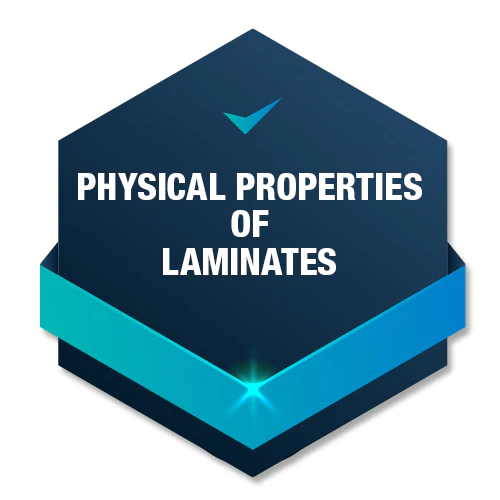
Physical Properties of Laminates
For those of you that like to work with numbers, we have compiled the following chart to illustrate the salient features of various constructions of reinforcements.
Physical Properties of Laminates
For those of you that like to work with numbers, we have compiled the following chart to illustrate the salient features of various constructions of reinforcements.

Catalyst Concentration & Equivalent Measure
Catalyst Concentration Chart (volume of catalyst to be used with Resins & Gel Coat - MEKP - Percent by Weight) Cubic Centimeters & Ounces Resin Volume 1/2% 3/4% 1% 1-1/2% 2% CC Oz. CC Oz. CC Oz. CC Oz. CC Oz. 1 Pint 3 - 4 1/8 5 1/8+ 7 1/4 9 3/8 1 Quart 5 1/8+ 7 1/4 9 1/3 14 1/2 18 5/8 #10 Can 15 1/2 23 3/4 30 1 45 1-5/8 60 2 1 Gallon 19 5/8 28 7/8 37 1-1/4 56 2 74 2-1/2 5 Quart 23 3/4 35 1-1/8 46 1-5/8 70 2-1/2 92 3-1/4 5 Gallon 95 3-1/4 140 4-3/4 185 6-1/2 280 9-3/4 370 13 Teaspoons & Tablespoons Resin Volume 1/2% 3/4% 1% 1-1/2% 2% tsp Tbsp tsp Tbsp tsp Tbsp tsp Tbsp tsp Tbsp 1 Pint .6 .2 .8 .3 1 .4 1.5 .5 2 .6 1 Quart 1 .4 1.5 .5 2 .6 3 1 3.8 1.2 #10 Can 3.1 1 4.8 1.6 6 2 9.1 3 12 4 1 Gallon 4 1.3 5.9 2 7.5 2.5 11.4 3.8 15 5 5 Quart 4.7 1.6 7.1 2.4 9.3 3.1 14.2 4.8 18.7 6.3 5 Gallon 19.3 6.5 28.4 9.5 37.5 12.5 56.8 19 75 25 Equivalent Measures Chart (Example: 1 Gallon = 231 Cubic Inches & will cover 160 sq. ft. @ 10 mils.) tsp Tbsp CC Fluid Ounce Drop MEKP Cubic Inches Gallons Cups Sq. Ft. @ 10 mil 1 tsp 1 .33 4.72 .167 192 .3 .0013 .0208 .208 1 Tbsp 3 1 14.8 .5 576 .9 .0039 .062 .624 1 CC .20 .067 1 .0353 39 .061 .0003 .0042 .042 1 Fl. Oz. 6 2 28.3 1 1152 1.8 .0078 .125 1.25 1 Drop (MEKP) .0052 .0017 .025 .0009 1 .0015 * .0001 .0011 1 Cu. In. 3.33 1.10 15.7 .556 639 1 .0043 .069 .694 1 Gallon 769 253 3630 128 * 231 1 16 160 1 Cup 47.6 15.7 225 8 9140 14.3 .0620 1 10 (Last column is the number of square feet a given volume will cover at a thickness of 10 Mil (.010") wet.)
Catalyst Concentration & Equivalent Measure
Catalyst Concentration Chart (volume of catalyst to be used with Resins & Gel Coat - MEKP - Percent by Weight) Cubic Centimeters & Ounces Resin Volume 1/2% 3/4% 1% 1-1/2%...
-

Viscosity Guidelines
The following chart represents the consistency for a variety of commonly used household materials at room temperature. Viscosity in Centipoise Similar in Consistency of: 1 = water 500 = #10 Motor Oil 2,500 = Pancake Syrup 10,000 = Honey 50,000 = Ketchup 250,000 = Peanut Butter
Viscosity Guidelines
Learn MoreThe following chart represents the consistency for a variety of commonly used household materials at room temperature. Viscosity in Centipoise Similar in Consistency of: 1 = water 500 = #10...
-

Useful Weights & Measures
Weight gram 15.43 grains gram .0022 lbs pound 16 oz. kilogram 1000 grams Area gm/m² oz/yd² square meter 10.76 sq. ft. square meter 1.196 sq. yds Liquid Measure milliliter 1 cc liter 1.05 quarts gallon 4 quarts Cubic Measures 144 cubic in. 1 board foot 1728 cubic in. 1 cubic foot 27 cubic feet 1 cubic yard Square Measures 144 sq. in. 1 sq. foot 9 sq. feet 1 sq. yard
Useful Weights & Measures
Learn MoreWeight gram 15.43 grains gram .0022 lbs pound 16 oz. kilogram 1000 grams Area gm/m² oz/yd² square meter 10.76 sq. ft. square meter 1.196 sq. yds Liquid Measure milliliter 1...
-

Reinforcement Comparisons
Part Number WeightNearest Ounce(oz./sq.yd.) Construction Thickness Width(in.) Weave Break Strength(lbs.in.)Warp/Fill 241 2 32 x 28 .0035 38 Plain 115/100 573 3 60 x 58 .0035 38 4HS 135/125 262 4 24 x 22 .0056 50 Plain 140/140 259 6 18 x 18 .0080 38 Plain 250/220 243 7.5 16 x 14 .0100 38 Plain 300/280 244 7.5 16 x 14 .0100 50 Plain 300/280 543 9 57 x 54 .0090 38 8HS 650/340 245 10 16 x 14 .0120 38 Plain 420/375 271 10 16 x 14 .0120 50 Plain 420/375 247 10 16 x 14 .0120 60 Plain 420/375 254 20 40 x 21 .0300 38 Mock Leno 750/450 1094 9 2 x 2 .008 38 Twill N/A
Reinforcement Comparisons
Learn MorePart Number WeightNearest Ounce(oz./sq.yd.) Construction Thickness Width(in.) Weave Break Strength(lbs.in.)Warp/Fill 241 2 32 x 28 .0035 38 Plain 115/100 573 3 60 x 58 .0035 38 4HS 135/125 262 4...
-

Physical Properties of Laminates
For those of you that like to work with numbers, we have compiled the following chart to illustrate the salient features of various constructions of reinforcements.
Physical Properties of Laminates
Learn MoreFor those of you that like to work with numbers, we have compiled the following chart to illustrate the salient features of various constructions of reinforcements.
-

Catalyst Concentration & Equivalent Measure
Catalyst Concentration Chart (volume of catalyst to be used with Resins & Gel Coat - MEKP - Percent by Weight) Cubic Centimeters & Ounces Resin Volume 1/2% 3/4% 1% 1-1/2% 2% CC Oz. CC Oz. CC Oz. CC Oz. CC Oz. 1 Pint 3 - 4 1/8 5 1/8+ 7 1/4 9 3/8 1 Quart 5 1/8+ 7 1/4 9 1/3 14 1/2 18 5/8 #10 Can 15 1/2 23 3/4 30 1 45 1-5/8 60 2 1 Gallon 19 5/8 28 7/8 37 1-1/4 56 2 74 2-1/2 5 Quart 23 3/4 35 1-1/8 46 1-5/8 70 2-1/2 92 3-1/4 5 Gallon 95 3-1/4 140 4-3/4 185 6-1/2 280 9-3/4 370 13 Teaspoons & Tablespoons Resin Volume 1/2% 3/4% 1% 1-1/2% 2% tsp Tbsp tsp Tbsp tsp Tbsp tsp Tbsp tsp Tbsp 1 Pint .6 .2 .8 .3 1 .4 1.5 .5 2 .6 1 Quart 1 .4 1.5 .5 2 .6 3 1 3.8 1.2 #10 Can 3.1 1 4.8 1.6 6 2 9.1 3 12 4 1 Gallon 4 1.3 5.9 2 7.5 2.5 11.4 3.8 15 5 5 Quart 4.7 1.6 7.1 2.4 9.3 3.1 14.2 4.8 18.7 6.3 5 Gallon 19.3 6.5 28.4 9.5 37.5 12.5 56.8 19 75 25 Equivalent Measures Chart (Example: 1 Gallon = 231 Cubic Inches & will cover 160 sq. ft. @ 10 mils.) tsp Tbsp CC Fluid Ounce Drop MEKP Cubic Inches Gallons Cups Sq. Ft. @ 10 mil 1 tsp 1 .33 4.72 .167 192 .3 .0013 .0208 .208 1 Tbsp 3 1 14.8 .5 576 .9 .0039 .062 .624 1 CC .20 .067 1 .0353 39 .061 .0003 .0042 .042 1 Fl. Oz. 6 2 28.3 1 1152 1.8 .0078 .125 1.25 1 Drop (MEKP) .0052 .0017 .025 .0009 1 .0015 * .0001 .0011 1 Cu. In. 3.33 1.10 15.7 .556 639 1 .0043 .069 .694 1 Gallon 769 253 3630 128 * 231 1 16 160 1 Cup 47.6 15.7 225 8 9140 14.3 .0620 1 10 (Last column is the number of square feet a given volume will cover at a thickness of 10 Mil (.010") wet.)
Catalyst Concentration & Equivalent Measure
Learn MoreCatalyst Concentration Chart (volume of catalyst to be used with Resins & Gel Coat - MEKP - Percent by Weight) Cubic Centimeters & Ounces Resin Volume 1/2% 3/4% 1% 1-1/2%...
We've specialized in composite materials for over 50 years, so we've had plenty of time to gather the insight and practical advice that could make the job easier for any fabricator, whether you're a beginner or an expert. The Learning Center has been designed as a go-to educational resource to share that experience.
Should you use carbon fiber, fiberglass, or Kevlar® reinforcement? Compare them here. Troubleshoot surfacing issues and repairs; or learn how to refine vacuum bagging or mold-making techniques. You'll get an in-depth look at a number of topics, with added visual reference and helpful tools that make planning any project go more smoothly, right from the start.
Visit our online catalog for composite materials including carbon fiber, fiberglass, and Kevlar; vacuum bagging supplies; epoxy, polyester, and vinyl ester resin; gel coat, prepregs, mix-and-pour foam, and more.
If you need more assistance, call a Sales Service Representative at 1-800-838-8984, 8 a.m. to 5 p.m. EST Monday - Friday.